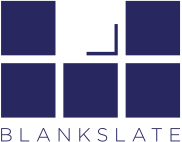It’s time for part two in our onboarding series—if you missed part one, check it out here! In this instalment, we discuss what a successive onboarding plan should include. Check back soon for our final instalment!
We know what onboarding is, and we have some idea of why it’s important (after all, more than 50% of voluntary turnover occurs in an employee’s first year!). Now, we’re ready to tackle those problems. Remember, the goal of onboarding is simple: the faster that new hires feel welcome and prepared for their jobs, the sooner that they’re able to become top contributors in the workplace.
But how do we build an onboarding plan to ensure that our new hires are happy, engaged, and ready to work?
According to the Society for Human Resource Management (SHRM), onboarding consists of the 4 C’s:
Compliance: the most basic level, covering legal and policy-related requirements of the job
Clarification: making sure employees understand their new jobs and what’s expected of them
Culture: translating your organization’s norms (how you work)
and
Connection: the network and relationships that your new employee should build and navigate
If you’re trying to build or reinforce your own onboarding plan, it helps to look at the overall experience from each of these angles.
Compliance
No one loves filling out forms, so for the sake of a smooth onboarding experience, make sure that you’re handling new employee paperwork efficiently. Maybe you need an HRIS, maybe you’re not quite big enough for one yet—but either way, you should get the legal stuff out of the way in the most painless way possible.
Try to send all necessary information (think: benefits selection, tips on what to wear, where to go and who to ask for on their first day) before your new employee starts. Electronic signatures can make everything easier! You should also have the employee’s space and equipment (desk, computer, email address, phone, whatever they need to do their job) ready to go when they arrive.
Clarification
Studies have shown that role clarity is a major predictor of job satisfaction and commitment; if people know what they need to do to be successful in their role, they’re much more likely to stay.
Being super clear with expectations right from the start can also have a positive effect on the team surrounding your new hire, some of whom might worry that a new team member will take over their responsibilities. When everyone’s on the same page, they can pull together as a team.
Because onboarding is a process, not a step, clarification also includes ongoing training and skills development. If you allow space for employees, both new and seasoned, to make mistakes, ask for help, and receive necessary training, you encourage retention.
Culture
The most successful onboarding programs link a company’s core values to their new employee’s experience. To translate your unique culture for your new hires, you need to be sure that you’re clear on your values. If you’re not, we’ve got tools that can help!
At FreshBooks, for example, where customer service is one of their core values, every new employee, regardless of their position, spends time in a customer service role when they join the company. By tying their first impression of the company to one of FreshBooks’ core principles, new hires get a practical grounding in what those values look like in practice—at FreshBooks, no matter your position in the hierarchy, the customer comes first.
Connection
Culture is how we work, but connections are how we navigate that culture. 70% of employees say that having friends at work is the most important element of a happy working life. If you’re leaving the formation of those connections to chance, you’re missing out on a big opportunity to improve employee engagement.
You can encourage connection in any number of ways, but it’s important not to assume that team-building will take care of itself. Start by taking your new hire and a few members of their team out to lunch on their first day. The informal setting gives everyone a chance to get to know each other, and having a few extra people around helps keep the pressure low.
Regular check-ins from managers and HR are also key to forming connections in the workplace. Employees should know who they can go to for help, support, and feedback.
